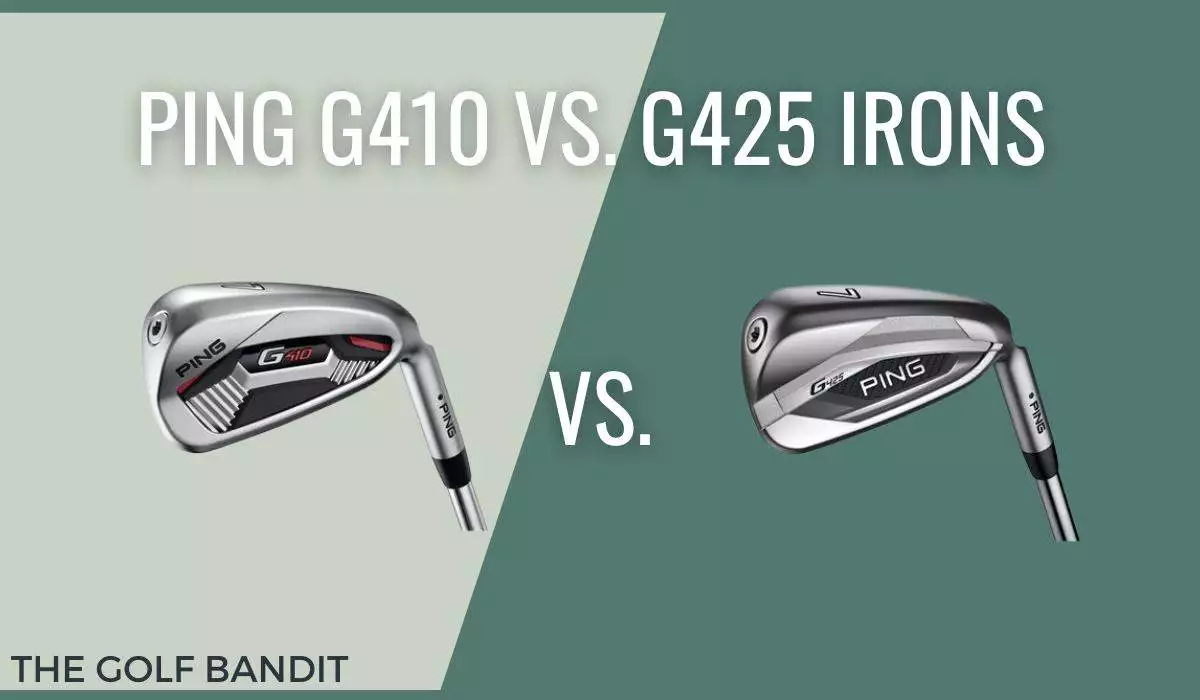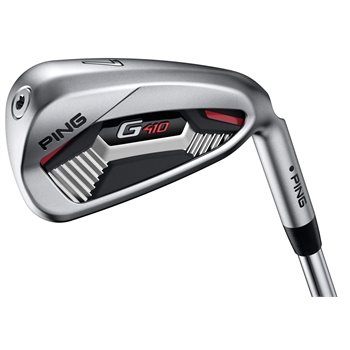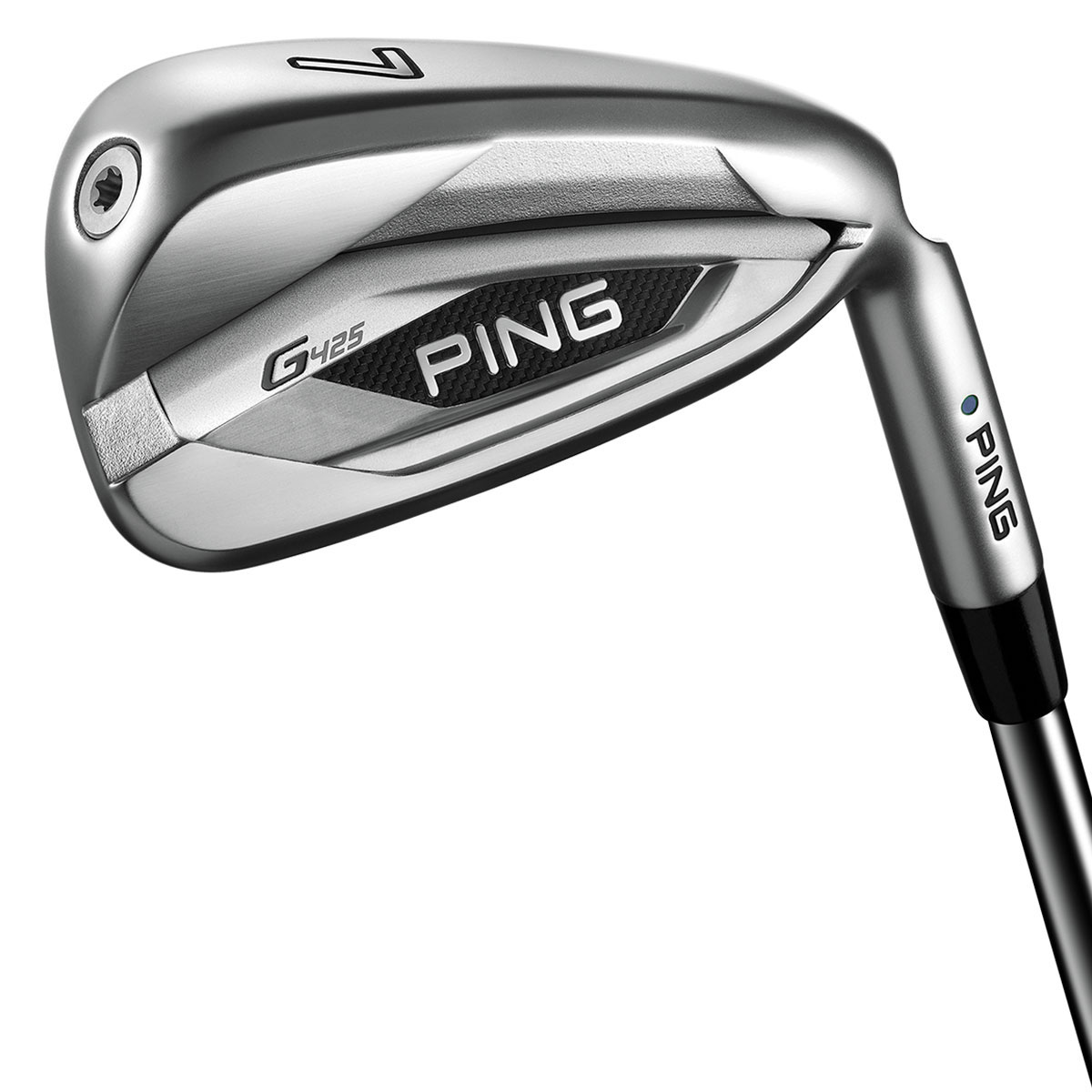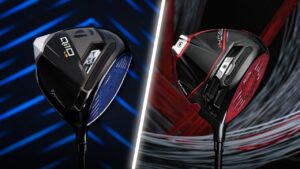Ping is one of the oldest and most reliable club manufacturers in the golf world.
They have a great mix of drivers, woods, irons, wedges, and putters to help all types of golfers.
It doesn’t matter if you’re a newer player, a weekend warrior, or an avid golfer, there are tons of clubs to choose from.
Today we’ll compare two of their most popular irons – the Ping G410 irons vs. the Ping G425 irons.
We’ll cover more about the design, forgiveness, distance, lofts, and what type of golfer should play each set of irons.
Ping G410 Irons vs. Ping G425 Irons Review
Ever since Ping released the G-series, there have been quite notable improvements year after year. Whether in design, forgiveness, distance, or control, Ping irons always deliver.
So, exactly how much did Ping step up the game this time with its G425 irons? Are they that far better than the G410 irons?
Here’s an overview of the two products to further understand what they have in common and what separates them.
Ping G410 Irons
Ping released the G410 irons as an improvement over their predecessors, the G400.
As Ping noted on their website, “In the G410 iron, we took game-improvement technology and reshaped it, giving the model less offset and a shorter blade length while maintaining MOI to create the most forgiving iron on the market for its size.”
The G410s offer a reduced offset of about 10% and a blade length nearly 3% shorter than the G400s.
They’re a mid-sized cavity back iron that are aimed at mid-handicap golfers more so than beginners.
If you’re a pretty consistent golfer who likes to shape shots (draws and fades), change trajectories but need a little forgiveness, these are a great choice.
Here’s why…
Pros
- Excellent control.
- Relatively compact design.
- Improved forgiveness levels.
- Larger flex zone to increase ball speeds.
- Cavity badge dampens vibrations to improve feel and sound.
- Toe/hosel weighting also helps deliver faster ball speeds and more forgiveness than G400.
Cons
- The face is a bit more prone to wear and tear.
- Not as forgiving for beginners and higher handicappers.
- Some players find the stamp on the face and the toe screw distracting.
Now, let’s get into the newer design in the G425 irons.
Ping G425 Irons
The Ping G425 family of Ping clubs (driver, fairway woods, irons) are aimed more at mid to higher handicappers who want more forgiveness above all else.
Ping labels the G425 irons as a “metal wood style” but still a lot smaller than hybrid-irons from other companies.
Here’s how Ping described the G425 irons on their website. “The metal-wood-style, variable-thickness face and internal geometry increase ball speed and flexing for launching shots higher and farther with stopping power to hold greens.”
Both irons have the same specs (loft/lie) which we’ll detail more below. Here’s why these irons are a solid choice for mid to higher handicappers.
Pros
- Easy to hit.
- Eye pleasing look at address.
- Two stock shafts – graphite or steel options.
- Shorter blade length than the G410, but a higher MOI head.
- Tungsten toe screw and hosel weight makes them extremely forgiving for a compact shape.
- Hyper 17-4 stainless steel face helps improve ball speed for higher, longer shots with every club in the set.
Cons
- No hybrid or 3-iron options.
- Might not be as forgiving as other metal wood/hybrids like irons.
Ping G410 vs. Ping G425 Irons
The quite subtle differences between Ping’s G410 and G425 irons result in little, yet noticeable changes in performance.
Here are the biggest things to consider between each set of clubs – which overall share a lot of similarities.
1. Key Features and Performance
Ping G410
The G410 irons have a flexible, free moving face that amplifies ball speeds for more distance and higher launch. The COR-eye technology also helps improve ball speeds for longer distances as well.
Ping G425
The G425 has a more speed generating face to help with ball speed as well. It’s a more streamlined look than the 410’s which is preferred by more experienced golfers.
For being labeled a game improvement iron, they do not have a large topline, which is visually distracting for a lot of golfers.
2. Design and Feel
Both iron sets have a sleek and compact design while maintaining their signature high MOI, which correlates to more forgiveness.
Ping G410
The reduced blade length and offset give the G410 irons that exceptional MOI and more forgiveness.
The toe/hosel weighting is another perk with these irons vs. the perimeter weighting of the 425s.
Here’s how Ping described this technology. “The face and cavity structure deliver faster ball speeds and save weight for expanding the perimeter weighting. Weight savings are concentrated in the toe and hosel to increase MOI 8% for more forgiveness and consistency.”
Ping G425
Ping G425 irons with metal-wood design provide faster and higher ball hits. The added weight to the shaft’s toe and hosel reflects on the overall MOI too.
As for the cavity badge, the multi-material composition offers better sound and feel.
These clubs might have even more stopping power, too. “A patented cascading sole and top-rail undercut combine to perform like a hinge, flexing to launch the ball faster and higher with green-holding precision consistently and predictably.”
Once again, it’s tough to pick a clear winner as the clubs are so similar and have plenty of innovative technology for your game.
3. Loft
Loft is another key component to think about when comparing irons.
Some irons have stronger lofts, which make them easier to hit longer, but could impact trajectory and stopping power on the green.
Luckily, with all the new technology in the club heads and shafts, this isn’t as big of an issue anymore.
Ping G410
The G410 irons haven’t offered much change in lofts than their predecessors, the G400s.
However, the larger face, as well as the COR-Eye technology, improved the ball’s speed and trajectory.
Here are the G410 individual irons standard lofts:
- 4-iron: 20.5°
- 5-iron: 23.5°
- 6-iron: 26.5°
- 7-iron: 30°
- 8-iron: 34.5°
- 9-iron: 39.5°
- Pitching Wedge (PW): 44.5°
- Utility Wedge (UW): 49.5°
- Sand Wedge (SW): 54°
- Lob Wedge (LW): 58°
Ping G425
G425 irons have identical lofts to those of the G410s.
One thing that’s great with both sets of irons is that you can add on a UW, SW, or LW as well. This is a great perk to match your wedges with your irons for an easy transition when hitting shorter clubs.
Once again, there isn’t a clear winner as the specs are identical with loft, lie angle, and length.
4. Shaft Selection
Ping offers a wide variety of steel and graphite shaft flexes to suit all types of golfers.
As noted on their website, “The choice of steel or graphite shafts is usually based on preferences for weight and/or feel. Players seeking a lighter overall weight and/or a softer feel in their irons may prefer graphite shafts, while players who prefer a standard-weight club with a firmer feel may prefer steel shafts.”
Choosing the right shaft can have a huge impact on your distance, trajectory, and overall performance.
5. Forgiveness
Ping G410
The added weight in the toe and hosel area makes up for the reduced head size. This plays a big role in increasing the MOI, making them very forgiving.
Ping G425
The tungsten to screw and hosel weight, as mentioned before, increases the MOI of the G425 irons even more. This, in turn, further assists with the club’s extra forgiveness.
6. Who Are They For?
Having better ball speed, higher performance, or greater forgiveness doesn’t mean that this particular iron set is better for you than the other.
So, when it comes to Ping G410 vs. Ping G425 irons, knowing who they’re more suitable for would greatly help in making your decision.
Ping G410
The G410 irons are perfect for a mid-handicapper who’s ready to move ahead and advance to be a mid-handicap golf player.
That’s due to the wide sole and low center of gravity, making them quite easy to get in the air.
Ping G425
As for the G425 irons, they’re also suited for mid-handicappers who want a slightly updated design from the 410s.
If you feel like the extra MOI and solid perimeter weighting would benefit your overall performance, then you should definitely spend more to get the G425 irons.
However, if you’re more into feel and comfort, you’ll find the material mix of the G410 rear badge worth trying.
Top Questions
Is the Ping G425 a game improvement iron?
Yes, the G425 series are forgiving enough to be considered a game improvement set of irons.
They aren’t nearly as clunky as some irons that are also considered game improvement.
What handicap are Ping G410 for?
Ping has stated that both the G410 and the G425 are ideal for mid-handicap golfers.
What year did Ping G410 come out?
This series was released in early 2019 and includes drivers, woods, and irons.
Closing Thoughts
So, who wins in the Ping G410 vs. Ping G425 irons?
Honestly, I don’t know if there is an obvious winner as they’re so similar. There’s no doubt they’re both great sets of irons that can help your mid-range game to hit more greens in regulations.
If you’re looking for a smaller clubhead and prefer a more compact shape, the G425 is the best option. But if you want one that is slightly bigger and might be a little more forgiving, the G410 might be a better fit.
Ultimately, they are both hit easy and carry a long way with an impressive level of forgiveness.
Both the G410 and G425 irons are great for mid-handicappers and even if you’re closer to single digits. Higher handicappers might not benefit from these sets and should opt for ones that have a larger design with more distance features.
The lofts aren’t very strong and won’t help you gain much distance either. But if you have the speed, there’s no doubt both of these irons sets are a solid choice.







